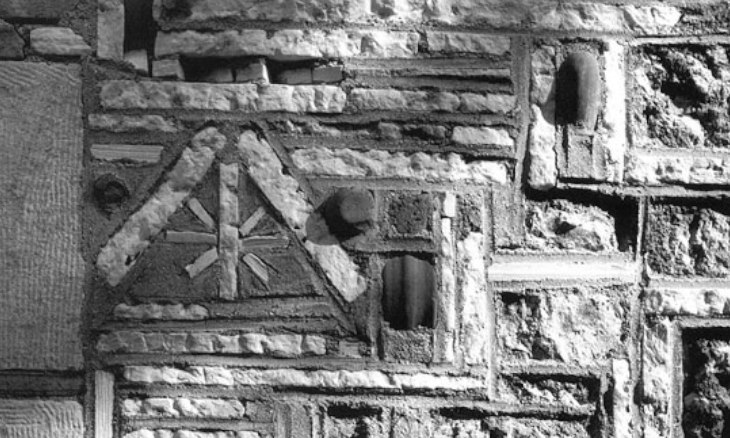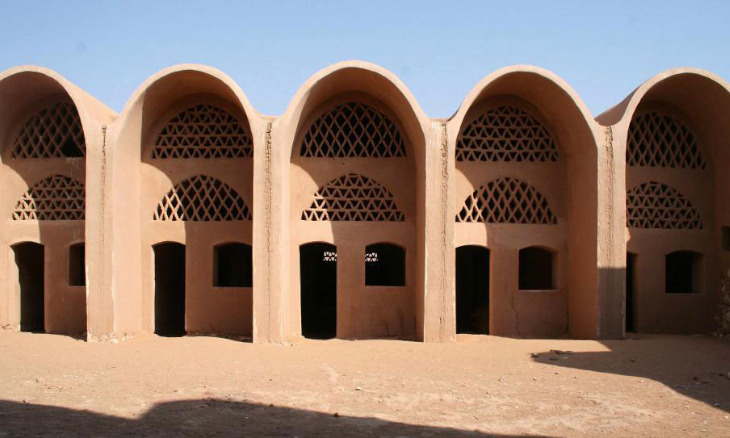The "undecided moderns” of Turkish architecture
In his recent book Professor Uğur Tanyeli discusses a widespread leaning in Turkish architecture. He does this by introducing five architects: Paul Schmitthener, Dimitris Pikionis, Hassan Fathy, Sedat Hakkı Eldem and Charles Correa. They have one commonality, which is that they have not unconditionally succumbed to modernism.
Professor Uğur Tanyeli, at the beginning of his new book titled “Mütereddit Modernler,” which translates to “Undecided Moderns” or “Hesitant Moderns,” writes: “This book has stemmed from the need to discuss a widespread leaning in Turkey.” He says that there is a belief that is frequently brought up today and even more so in the past that “Turkey sometimes joins the ‘contemporary and healthy’ tendencies in the world; at other times, it diverts from that road to make its own specific mistakes. For instance, a significant part of texts depicting 20th-century architecture in Turkey specify all modernistic tendencies as steps taken in the correct direction while steps that deviate are incorrect diversions.”
However, Tanyeli argues that the issue is not that straightforward. His book is about the criticism of modernism, but its perspective is ever-changing: it is not a book that you would immediately place within one of the known positions. Author Uğur Tanyeli does not refrain from criticizing both modernism and those who criticize modernism. Thus, the opportunity occurs throughout the book to question many universal opinions. He does this by introducing five architects: Paul Schmitthener, Dimitris Pikionis, Hassan Fathy, Sedat Hakkı Eldem and Charles Correa. As German, Greek, Egyptian, Turkish and Indian architects respectively, they have one commonality, which is that they have not unconditionally succumbed to modernism. But like all opponents of modernism, they experience the inevitable contradiction of being a person of their era while making full use of the benefits of the modern.
The system that made them important architects in the time they lived, the techniques they used and the buildings they produced are all included within the modernist lifestyle. However, they differ in that they resisted the strong reformist winds blowing in their own eras and regions. They made use of tradition and public memory and formed their own style. In fact, they transform traditionalism into an innovative approach thanks to their search for national identity, as seen, for example, in the work of Sedat Hakkı and Pikionis.
While explaining these five architects, Tanyeli does not abstain from pointing out their weaknesses. For instance, Schmithenner, who is one of the most famous names of his time, started designing buildings at the end of World War I. During the Nazi period and afterward, he remained a respectable and popular architect. He criticized Le Corbusier, reinforced concrete, and modern trends, and advocated “techniques connected inherently to German soil.” But very few of Schmithenner’s buildings have survived until the present, and his name is not counted among the most influential names in the history of German architecture today.

The common aspect of almost all of these architects, who were all looking for a different path within international modernist movements, is that they have an approach that kept an eye out for the traditional and what was being built on their own soil. Greek architect Pikionis, just like Sedat Hakkı Eldem, employed the folk architecture tradition. Also, like Sedat Hakkı Eldem, he was raised among the upper class and in an extremely European environment; despite this, he focused on folk culture, which was quite outside him. But the main difference between the two is that while Sedad Hakkı Eldem primarily designed high-class residences on Istanbul’s Bosphorus, Pikionis was inspired by village housing. Of course, we see that both of these architects were stars within young republics that were in the process of forming their national identities. They both undertook symbolic projects and won fame and success as significant actors in the efforts to generate national architectural languages. Of course, the different histories of Greek and Turkish societies account for the difference in the approaches of these two architects, but that is another issue.
Born to a rich, land-owning family, Hassan Fathy also won fame in the search for an architecture in harmony with Egypt’s climate and local resources. He was even in Turkey, lecturing for a short time at Middle East Technical University (ODTÜ) in Ankara in the '70s. His biggest project was the design of the village of New Gurna, which has since been relocated to protect its remaining structures. In Fathy’s imagination, New Gurna village was typically Egyptian but also a settlement suitable for modern society, with its mosque, theater and art school. This is because Fathy is a typical hesitant, undecided modern. In other words, he is aware of the inevitability of the “new,” but still tries to search and find the “new” inside of the “old.”

It is quite debatable how much of that “new” found by the hesitant moderns was accepted and how long-lasting it was. For instance, Cemal Emden, who went to Egypt to take pictures for this book, was not able to find one original Fathy house in New Gurna. Fortunately, the theater and the school buildings were still standing, but with a lot of grass growing around them.
We see that all the architects in the book adopted a “people’s” attitude with some populist tendencies, and that they contributed to the development of a cultural nationalism typical of intellectuals in the post-colonial period. They attempted to develop a new point of view by glorifying folk culture, a culture that they were not always a part of themselves. Nevertheless, they became quite successful in how they inspired others. Yes, how diffuse the book’s “hesitant moderns” were can be debated, but it is for sure that they were inspirational. The designs they created and the mentality they developed may be fragile and restricted in the face of the certainty of modernism, but they were definitely effective within architectural circles. They persuaded some elites, and their work was able to become permanent through the application of their designs in some private residences and monumental projects.
Uğur Tanyeli defines Sedat Hakkı as “the architect who loves the world he disowns.” Despite Sedat Hakkı’s lifelong effort to develop a Turkish architectural identity and even as the architect who is known as “the originator of the Turkish house,” he lived all his life as a European intellectual, almost an aristocrat.
Interestingly, several other architects with worldviews quite different from that of Sedat Hakkı also adopted the idea of being inspired by traditional design, and for a long time, no matter whether they were left-wing or right-wing, this idea became a widely-accepted truth. Still today, architecture in harmony with its surroundings is one of the most widespread architectural approaches; we can say that the hesitant moderns’ search for the traditional house had an effect on this.
As Tanyeli states, the legacy left behind by Sedat Hakkı Eldem continues to be effective. The search today for “local and national” architecture has brought back architectural features like wide eaves and jutting upper floors like that of Eldem and even, from much further back, the 1910s "Union and Progress" era.
“The Undecided Moderns: Architectural Ideologues in the World and in Turkey,” was published in 2018 by Işık University Publishing. Its design is by Bülent Erkmen, and Cemal Emden photographed the current appearance of the buildings that were still standing and looked for the traces of these architects in various countries. In other words, the book’s visual materials are both abundant and high-quality. Those who are interested in architects and architectural history have already bought the book, I am guessing, but this is an important book from which one can learn a lot. Anyone interested in the tension between modernism and tradition can add it to their reading list.

